Baboons, desert heat and smallmouth bass. They don’t often go together, but they do in Africa.
Now I was casting for the smallmouth species I know better– smallmouth bass– that had been established in rivers around Cape Town decades ago. But like me, these transplanted smallies didn’t appreciate the intense sun, especially since the water was very clear. We were fishing a stretch of stream just downstream of a power dam and the discharge was the clearest water I’d seen so far on the trip.
Conrad and Herman were hardcore fly guys and on-foot anglers. Chunky rainbow trout, brawny yellowfish and their Africanized smallies were common in various South African rivers, and the brothers fished all of them hard and effectively. I was the American smallmouth expert they had enticed to come 8,000 miles to show them how to really catch bass.
We did catch some fish in several pools, including a couple that made 15 inches. But the larger smallmouth that my hosts assured me were in the stream were in short supply. Herman was getting some bigger fish by using a full-sinking line to drag a fly across the bottom of the pool. That was good way to get midday action. But his 6-weight fly rod was extremely “soft” (flexing like a wet noodle) so most times I heard an excited “whoop” when a fish struck followed by a dejected “ohh, it got away.”
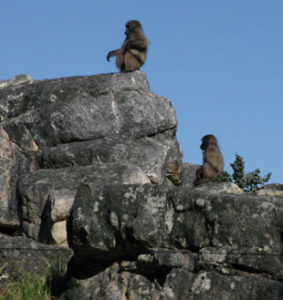
What I saw was from these guys.
The shorelines were a combination of desert-like sand and in other places car-sized boulders with a mix of brush and low “trees” barely worthy of the name. Most interesting (to me anyway) was what I saw in several places where the jumble of giant boulders made large crevices and sort of small caves– piles of odorous droppings, about the size a 6-year-old human might make. But these were left by one of our cousins, baboons. These remote-country baboons were genuinely wild, so the “troops” or groups of them always slipped away before we three noisy humans could see them.
Their steaming-fresh droppings made me excited since I always love animal sightings while in the field, and just the scat of an unusual or exotic species is often as close as you’ll come to seeing the animal itself. Baboons were certainly exotic to me, but to my South African pals not so much. In excellent English, but with an endearing Africaans accent, they wrinkled their noses and said, “dang baboons, they steeenk.”
Baboon droppings aside, it was hot and the big fish bite was tough. Plus it was a long way from twilight, so I thought the big boys might be a no-show before we had to make the long hike back to the car. But then, around a sharp bend in the river, we approached a canyon-like area, with especially steep rock bluffs on the west side of the river.
The summer sun was still beating down on the river as we stopped to survey the narrow channel with a deep outside bend on the far side. From a higher vantage point I could see much of the channel bottom and it looked barren to me, but my hosts were positive that big bruisers were indeed in the river. After a little discussion we agreed that we still had a little time left to fish before it got too dark to walk out through the boulder field. Intellectually, I could see the validity of that plan, but my tired and sun-beaten body said let’s head back now.
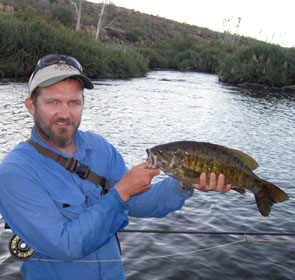
Conrad and a low-light 18-incher
My hardy pals (evidently used to desert conditions more than I) really wanted to fish this last deep hole, and the narrow channel and high banks meant just one person at a time could work the spot. It was Conrad’s turn to go first, so with more enthusiasm than I could muster he waded out waist-deep, so he could lay a cast near the far bank and work his fly deep. Nothing. After several fruitless casts, it looked like our last stand wouldn’t pan out.
But then someone hit the dimmer switch. The sun dipped below the bluff, and suddenly the light intensity dropped dramatically, casting our canyon stream in a deep shadow. Changing flies, Conrad cast again with renewed vigor. As quickly as the light declined, the bite increased. Running his weighted fly deep along the far bank (the same place he got nothing just minutes before) he saw the strike indicator wobble, then disappear. Setting the hook on something very solid, he let out a “whoop” as the unseen something charged away.
Finally it came towards him, and Conrad deftly plunged his arm into the water. Now an even bigger “whoop,” and Conrad lifted a dandy smallmouth high in the air. Stout of girth and a little over 18 inches in length, it dwarfed the fish we had caught earlier that day. A fast photo and back it went.
Since Conrad now seemed to have the hot hand, his brother and I encouraged him to try again. Not needing much urging, he made just two more casts and bingo. It happened again! His strike indicator went down and his rod bowed deeply. This fish jumped soon after feeling the sting of the hook, so we saw it quickly. Another lunker! And Conrad played it well. Then another deft hand grab, and out came the first fish’s twin. A hefty 18-inch- plus beauty that also got its picture taken before being sent home. But then not another bite, even with all three us quickly taking turns trying. By now, gathering gloom made heading back imperative. The brothers were a little ahead of me conversing in their native tongue, so I had time to reflect a bit on the day.
Two beauties in ten minutes from the same place. This made the day, and it wouldn’t have happened if we hadn’t paid our dues and stuck with it. “Sticking with it” is often excellent fishing advice, and perhaps a life lesson, too.
— Excerpted from the book “Adventures of a Fishing Bum — 27 True Tales.”
Read More Adventure Tales:


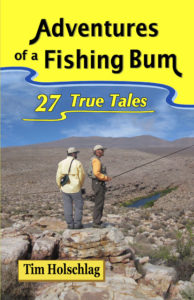
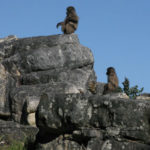
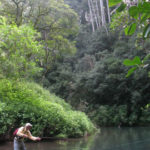
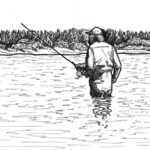
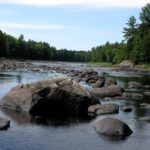
No comments yet.